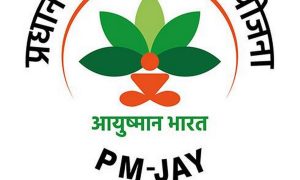National Pension System: There are three sections under the Income-tax Act that allows individuals to claim deductions for the money invested in NPS
The Income Tax Act of 1961 contains several provisions that allow you tax deduction benefits on investments in specific avenues. Deductions under Section 80CCD are one such popular option. National Pension System (NPS) allows you to invest more than ₹2 lakh in a financial year which can help you bring down your tax liability. There are three sections under the Income-tax Act that allows individuals to claim deductions for the money invested in NPS
Read More : Axis Bank revises FD interest rates effective 8 March 2022- Check new fixed deposit rates here
The Central Government established NPS to provide Indian citizens with the benefit of an organized pension scheme. The primary goal of NPS is to assist individuals in establishing a retirement corpus and receiving a fixed monthly payout to enable them to live a comfortable life after retirement.
Section 80CCD (1)
This section defines the rules governing the income tax deduction available to individuals for NPS contributions. It makes no difference whether the contribution was made by a government employee, a private employee, or a self-employed individual. The provisions of this section apply to all Indian citizens between the ages of 18 and 70 who contribute to the NPS. This also applies to non-resident Indians. Key provisions Section 80CCD (1):
The maximum deduction allowed under this section is 10% of the individual’s salary (basic + DA) or 10% of his or her gross income.
Read More : Motor Third Party premium rates for private cars and two-wheelers from April 1, 2022 – Check IRDAI proposals
This limit has been increased for self-employed individuals in FY 2017-18 to 20% of gross total income, with a maximum limit of ₹1,50,000 for a given fiscal year.
As sub-section 80CCD, a new amendment to Section 80CCD has been introduced in the Union budget for 2015, (1B). Individuals can claim an additional deduction of Rs. 50,000 under these new provisions. This is available to both salaried and self-employed people.
As a result, the maximum deduction available under Section 80CCD has been increased to ₹2,00,000/-. Section 80CCD(1B) tax benefits can be claimed in addition to the deductions available under Section 80CCD (1).
Section 80CCD (2)
When an employer contributes to an employee’s NPS, the provisions of Section 80 CCD (2) take effect. Employers can make NPS contributions in addition to PPF and EPF contributions. The employer’s contribution can be equal to or greater than the employee’s contribution.
This section only applies to salaried employees, not self-employed individuals. The deductions available under this Section are in addition to those available under Section 80 CCD (1). Section 80CCD (2) allows salaried individuals to claim deductions of up to 10% of their salary, which includes the basic pay and dearness allowance or is equal to the employer’s contributions to the NPS





































